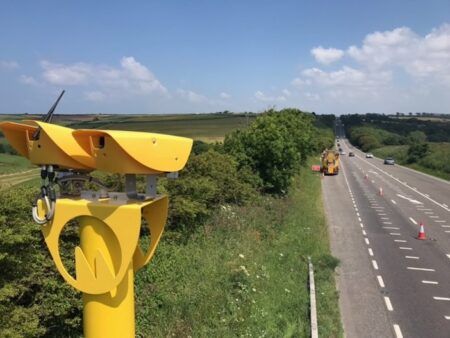Cambridge Mobile Telematics (CMT) has launched StreetVision, a new AI platform designed to predict and prevent crashes before they occur.
Touted as the first of its kind, StreetVision gives transportation agencies street-level insights into risky driving behaviors, allowing them to act before a crash makes it into the data.
The new tool helps traffic engineers, planners, and safety officials visualize dangerous roadway segments, prioritize countermeasures, and assess their impact over time. According to CMT, this marks a major shift from relying solely on historical crash data to making proactive, real-time decisions using advanced analytics.
“Safer roads save lives, strengthen communities, and power local economies. This is the mission we are advancing with StreetVision,” said William V Powers, co-founder and CEO of CMT. “This is the next evolution of road safety: using mobility insights to transform how societies invest in road safety so every community can reduce risks, accelerate improvements, and build safer systems from the ground up, preventing the next crash from happening.”

StreetVision is built on CMT’s opt-in mobility safety network, drawing anonymized and aggregated driving behavior data from millions of trips across the US. The platform captures and analyzes real-world indicators of risk, including phone distraction, speeding, hard braking, and aggressive cornering, providing a granular view of where dangerous behaviors are occurring, even before any collisions are reported.
Since 2020, over 200,000 people have died on US roads, according to the National Highway Traffic Safety Administration (NHTSA). In 2021 alone, 12,405 of those deaths were linked to distraction, representing more than a quarter of all traffic fatalities. NHTSA estimates that crashes cost the US economy US$340bn in 2019, with 4.5 million people seriously injured.
Traditionally, transportation agencies have relied on retrospective crash reports and periodic observational studies to inform road safety decisions. These methods often lag behind current conditions and may overlook risky behavior entirely, especially when it comes to distracted driving, which is significantly under-reported in police data.
“For years, we’ve known that distracted driving was under-reported, just like DUIs were in the past,” said Jim Markham, director of crash data and analysis at the Texas Department of Transportation. “Now, with StreetVision, we can measure risky driving across Texas communities every day.”
In Wyoming, officials are using the platform to improve work zone safety and address speeding issues more strategically. “The platform has helped us identify speeding hotspots and position more effective countermeasures, giving us faster, clearer insights to act before crashes happen,” said Karson James, highway safety behavioral grants program manager at the Wyoming Department of Transportation.
StreetVision is also providing new ways to evaluate the impact of safety initiatives. In Washington state, the platform’s data is being used to gauge the effectiveness of speed cameras in school zones and other countermeasures without deploying costly hardware. “We’re able to use it for speed analytics without deploying trailers or installing sensors,” said Staci Hoff, research director at the Washington Traffic Safety Commission. “And with daily insights, we can measure the impact almost immediately.”
CMT noted that StreetVision is already helping agencies tackle multiple safety challenges, from identifying dangerous corridors and intersections to supporting grant applications for countermeasures. The tool is being positioned as a valuable asset for Strategic Highway Safety Plans (SHSP), Vision Zero initiatives, and federal funding programs, such as the Highway Safety Improvement Program (HSIP) and Safe Streets and Roads for All (SS4A).
To find out more, watch this video:





